About The Photographer
Gregor Kacin is a 39-year-old landscape and nature photographer based in the charming little town of Idrija in western Slovenia. He is very fortunate to live in such a beautiful part of the country and he can often be found roaming the countryside, looking for that special moment when the true beauty of nature revels itself.
Gregor’s repertoire also includes cityscapes, street photography, macro images and elaborate model compositions. Like most photographers, he has always enjoyed the challenges in photography, and with the versatility of DSLR cameras he is really able to experiment and has a particular interest in long exposure photography. Gregor has also had lots of success in various national and international competitions and his images have been published in many newspapers and magazines including the National Geographic.
Gregor’s interest in photography began around 2011, before that he pursued a career in music where he explored and developed his inner passion for art. During this time he released three studio albums and achieved hits with the songs ‘Radio’ and ‘Taja’.
Below you can see some of Gregor’s finest landscape and nature photos from around Slovenia. If you want to see more of his impressive work, head over to his official website Gregor Kacin Photography or visit his social media pages on Facebook, Twitter, and Tumblr.
Photo Gallery
A beautiful picture gallery containing 40 stunning landscape photos from all around Slovenia by Gregor Kacin.
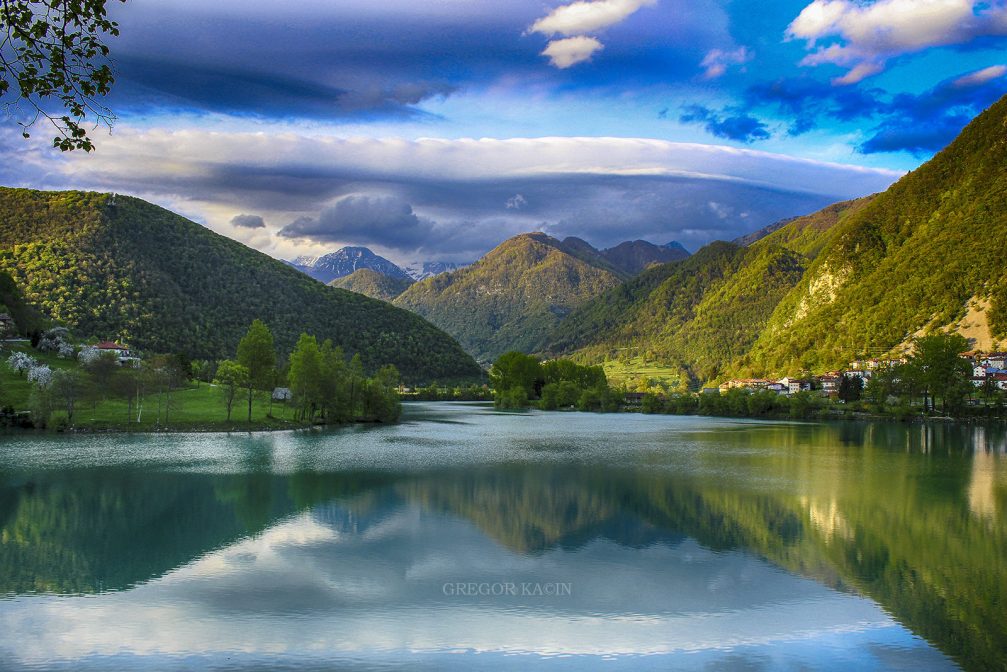
Soca is one of the most beautiful rivers in Europe due to its emerald color and extraordinary surroundings of the Triglav National Park. This crystal-clear river is chillingly cold (even at the peak of summer), perfectly clean, and looks like it comes from a fairy tale. In places where it is slow enough is great for boating and SUPing. In faster moving spots it is fantastic for rafting, kayaking, and canoeing. Those who are not into water activities can just sit on the banks and marvel at the remarkably eye-catching emerald waters.
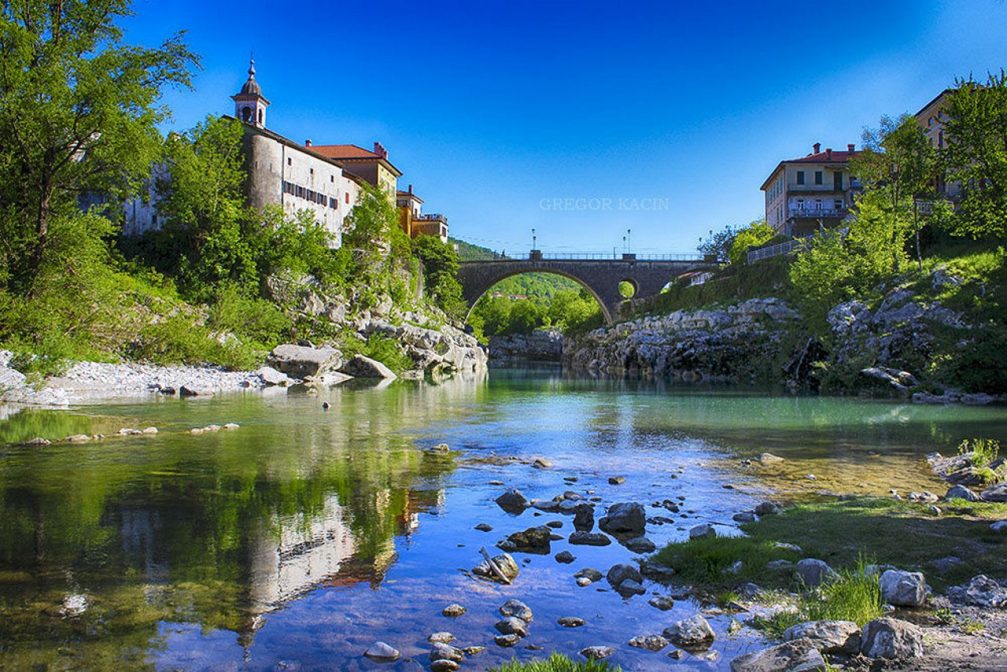
Kanal Ob Soci is a little medieval town that straddles both banks of the Soca River, and is linked by a twin-arch bridge. The bridge is around 17 meters tall and there is a very popular diving event that takes place every August featuring divers from Slovenia and abroad jumping into the emerald water from a wooden construction mounted on this picturesque bridge over the Soca river. The current bridge was built after the First World War, replacing a bridge blown up by the Austrian army during the war. The first bridge at this location was constructed by the Romans – the first mention of it dates to 1350.
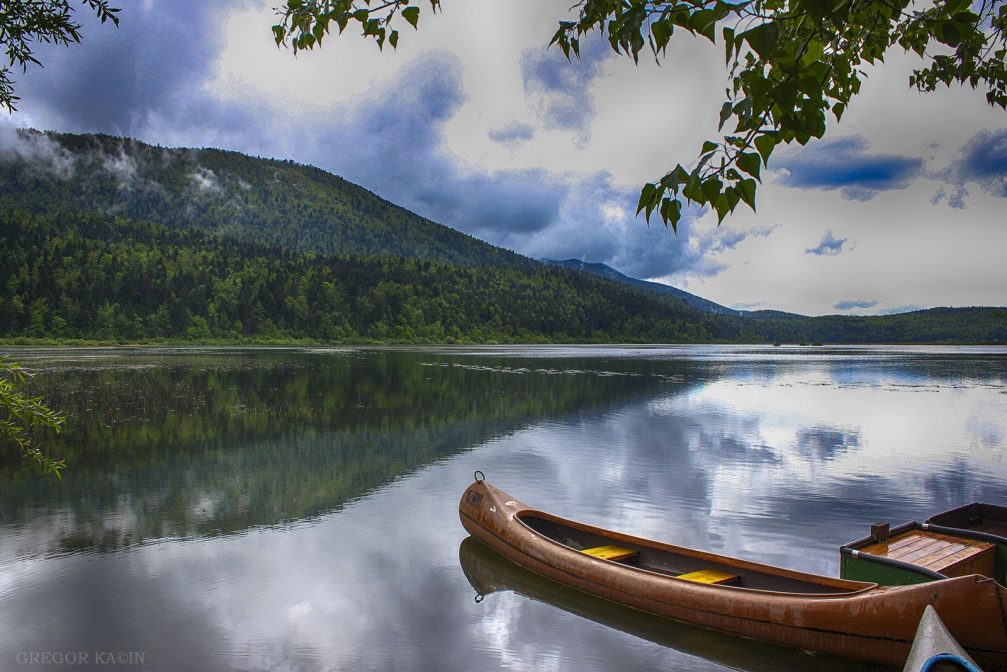
Lake Cerknica or Cerknisko Jezero as it is called in Slovene is one of the largest intermittent lakes in Europe and when full, it is the largest lake in Slovenia, covering a surface of up to 38 square kilometres (under ordinary conditions it usually reaches around 30 square kilometres). The lake is filled up in two or three days by heavy autumn rain and normally stays on the karst Cerknica plain for about eight or nine months a year. Discharge of water is a much slower process. During the dry season (usually July to mid-September), the lake drains out in three to four weeks and almost completely disappears.
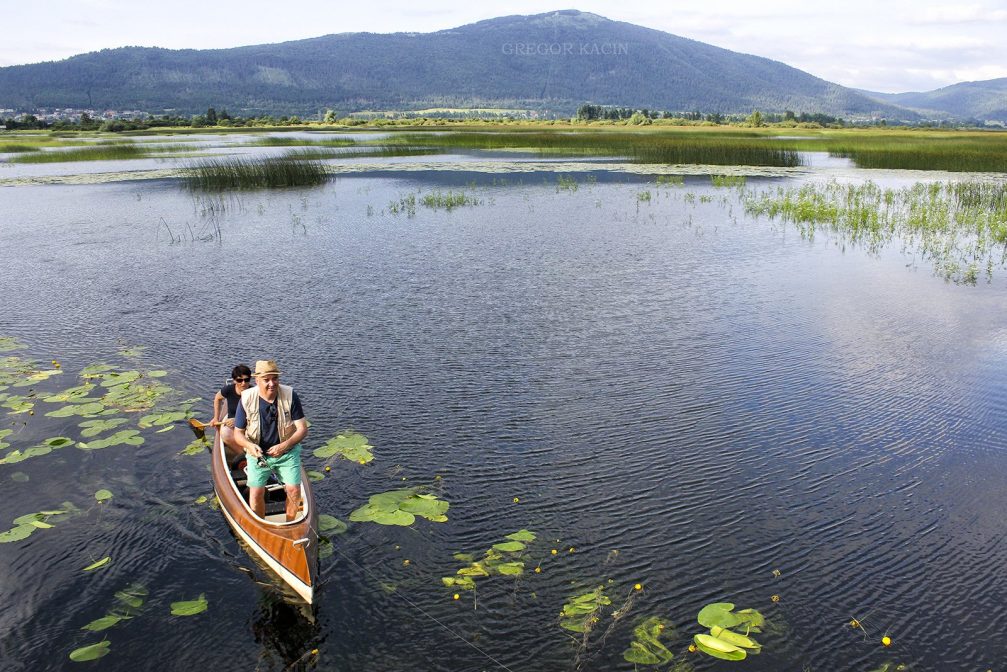
The people from the Cerknica area have strong connection to the intermittent Cerknica lake. The abundance of fish and game has provided locals with nourishment since the Stone Age. It’s a very unique area where farmers can plow fields, catch fish and drive boats in the same place in just one year.
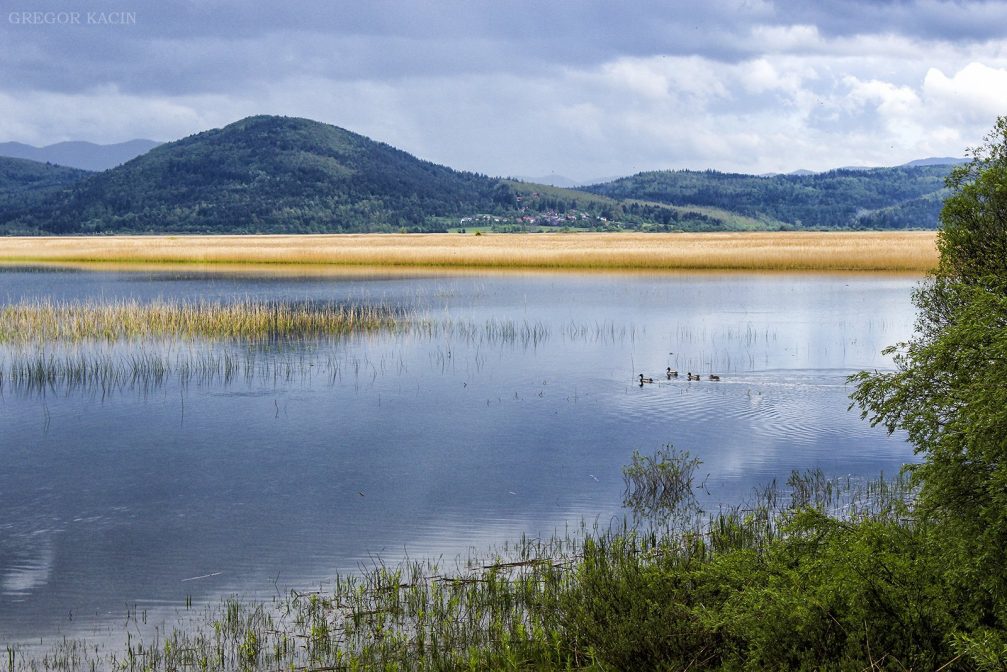
The Cerknica lake has been designated as a Ramsar site (recognized wetland of international importance) and also as a Natura 2000 site because of its importance for the preservation of endangered birds. When full it attracts more than 250 species of birds each year. It’s a birdwatchers’ paradise, and a tranquil place to appreciate nature.
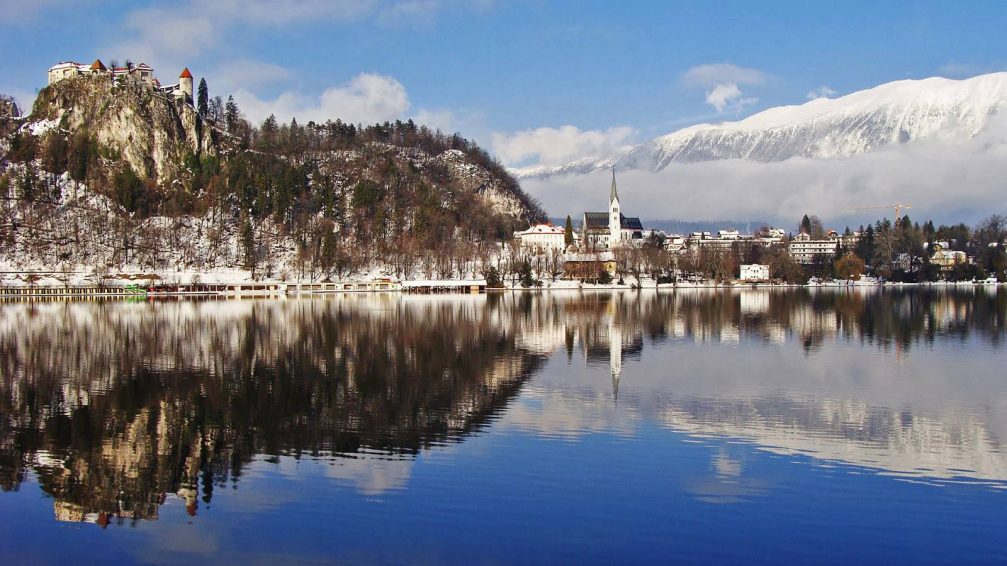
Lake Bled is a gorgeous, tranquil lake and understandably, one of the most visited tourist attractions in Slovenia, but visit it in winter and you’ll find it both glorious and quiet. In hibernation from the hustle and bustle of its peak season that lasts from mid-June till the end of August, this is probably one of the best times of year to pay this stunning place a visit.
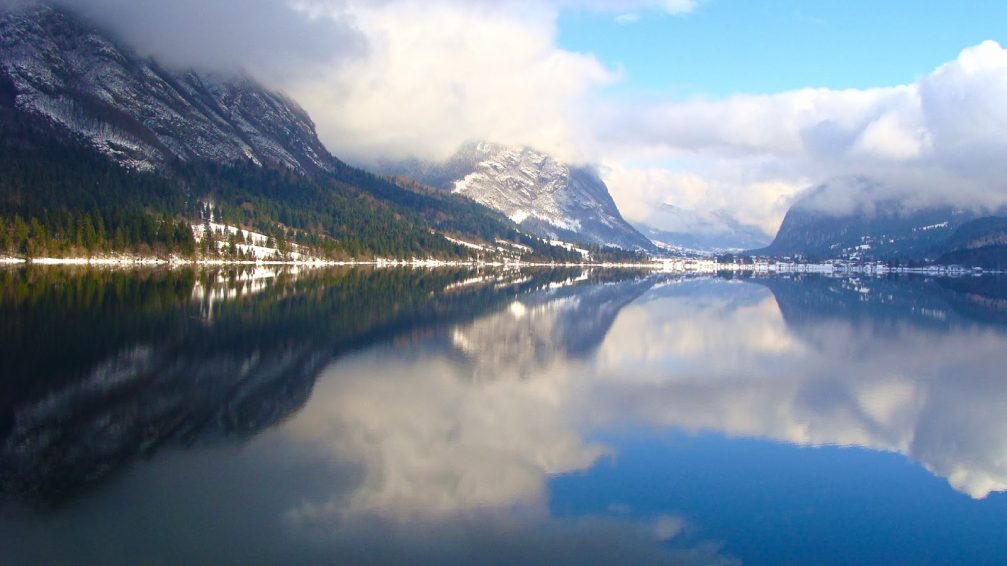
Slovenia is well known for the stunning natural wonders and Lake Bohinj is certainly one of them. Tucked in alpine foothills in the heart of the Triglav Natonal Park, Bohinj is a magical spot with extraordinary nature all around. No motorized boats are allowed on the lake surface, just rowboats, and there’s the same purity of water and clarity of silence here as there is at Bled. It’s not quite a hidden gem but it is undiscovered enough and not crowded at all which is wonderful!
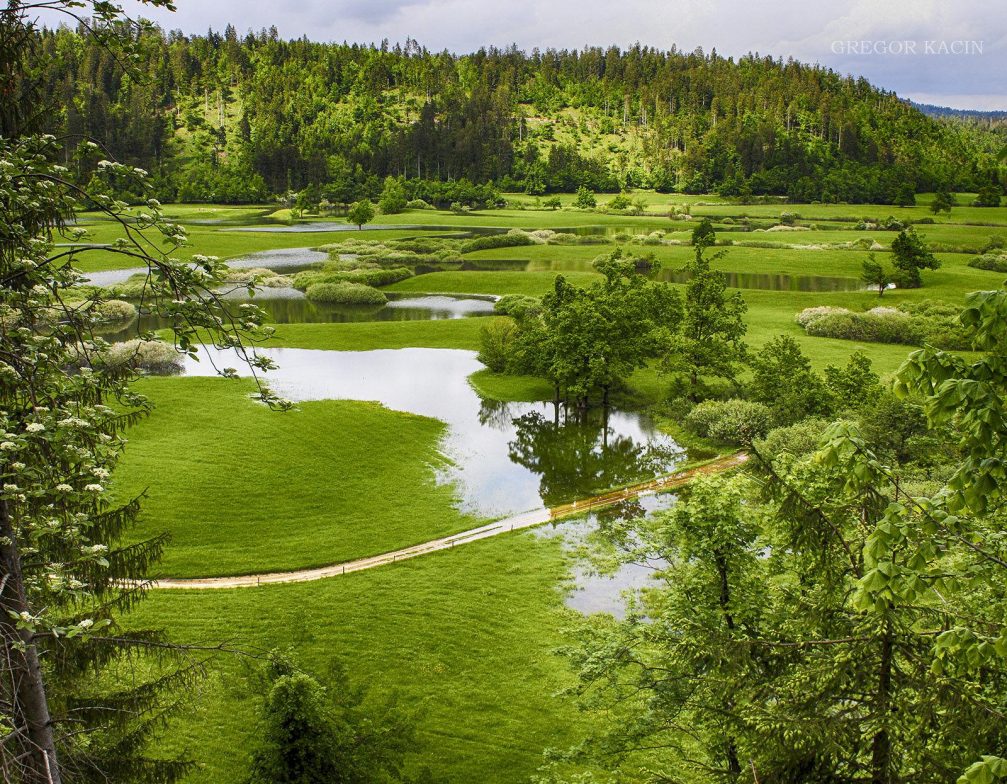
Planinsko Polje, which is a typical karst field in the Notranjska region of Slovenia, is also full of exciting natural phenomena. Meandering across it is the unique and very picturesque Unica River, which tends to flood in heavy rain (especially in spring and autumn), turning the Planinsko Polje karst field into a lake for a while.
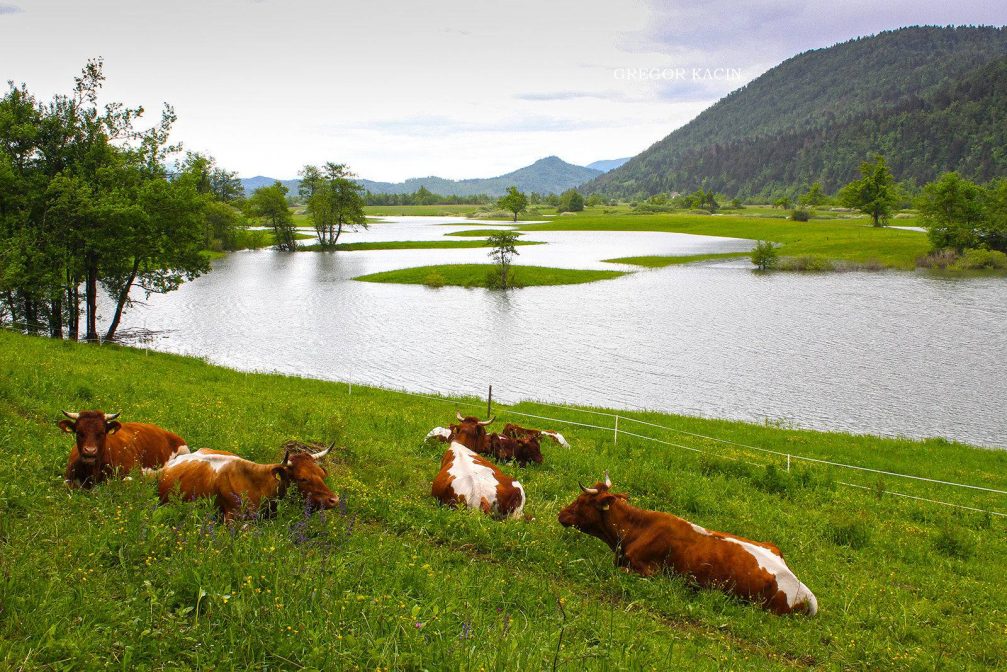
The Planinsko Polje karst field is a beautiful green place with many pastures and meadows along the meanders of the Unica river. The local people and animals here adapted really well to the river’s rhythm of flooding.
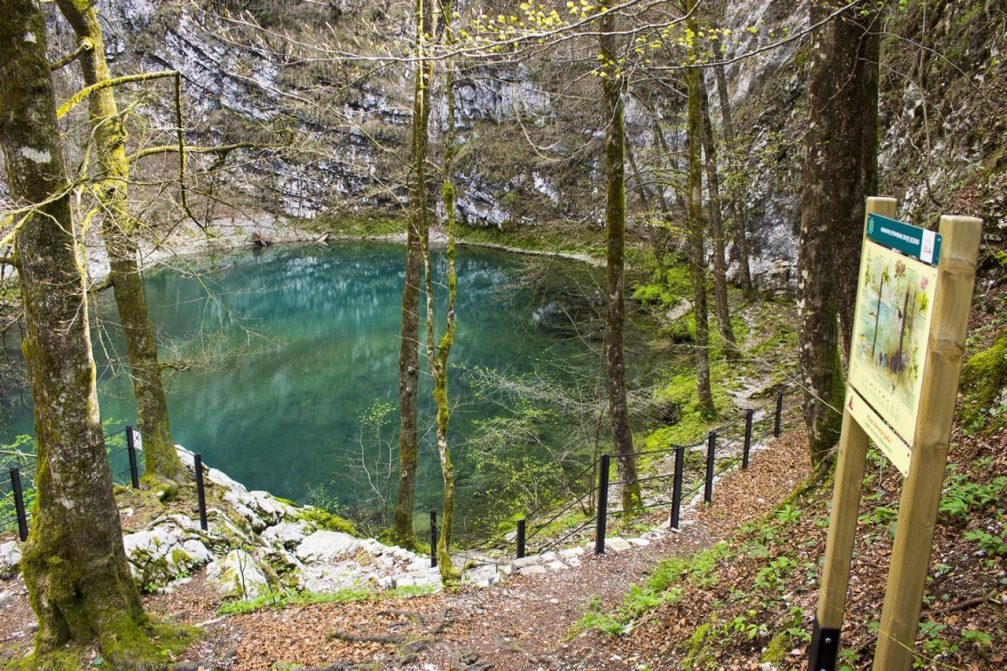
Divje Jezero or Wild Lake as it is called in English is a very unique and mysterious karstic lake located in Idrijski Log near the town of Idrija in western Slovenia. Since 1967, the lake has been protected as a natural monument of national significance of Slovenia. In 1972, the area of the lake was arranged into the first Slovenian outdoor museum in nature. What makes the lake so extraordinary is its Vaucluse spring which has been explored by the most experienced Slovenian divers to a depth of 160 metres (525 feet). There’s something magical about water that just spontaneously flows from the earth. Normally, the lake’s emerald green surface is calm and peaceful, but after a few rainy days the water that gathers from the entire area of the Crni Vrh plateau and the Javornik Hill starts bursting out from the underground. The lake is the source of the Jezernica River, which flows only 55 meters to the Idrijca River and is the shortest river in Slovenia.
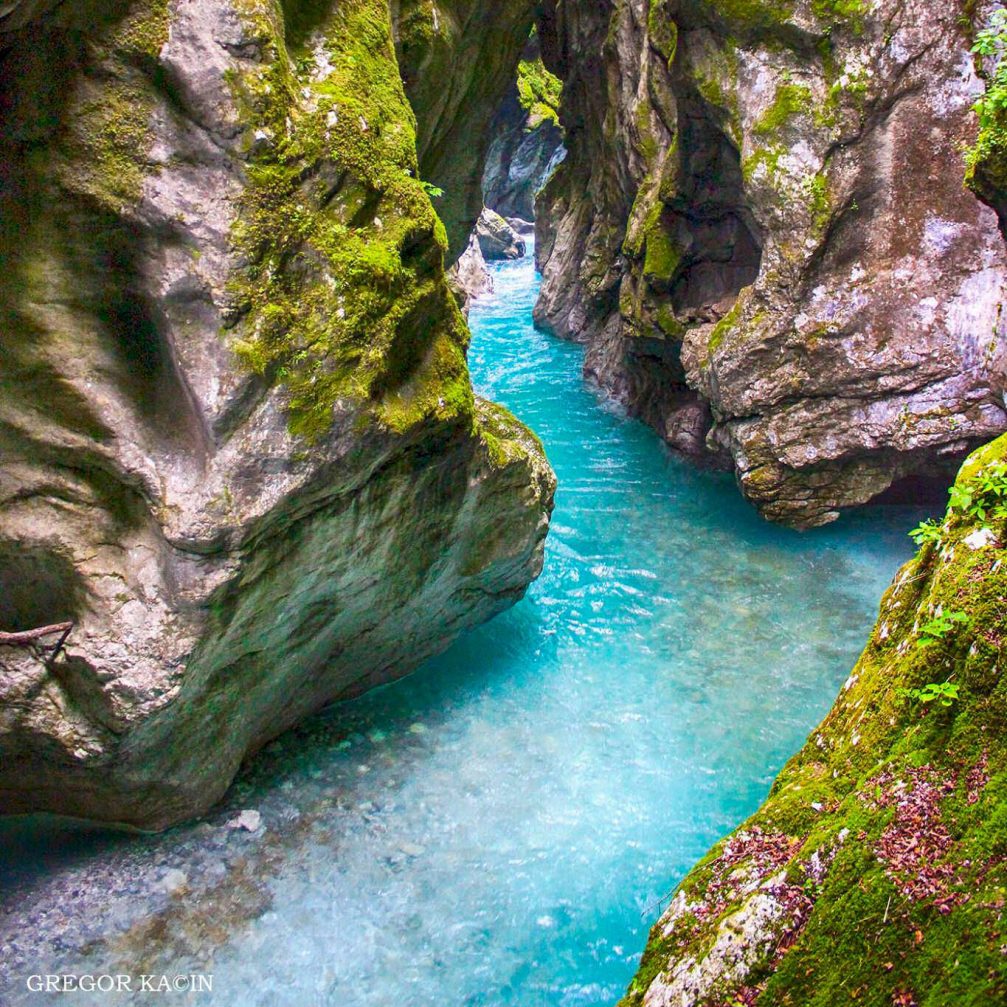
Tolmin Gorge is another beautiful natural wonder in the amazing area of the Triglav National Park, located a little less than a 5 minute drive from the town of Tolmin. It’s a little more strenuous of a hike than that at the more famous Vintgar Gorge in Bled, but still definitely worth a visit as you can walk it in an hour or so. Just make sure that you wear appropriate shoes with good soles and grip as you are required to go up and down rocky and often slippery steps.
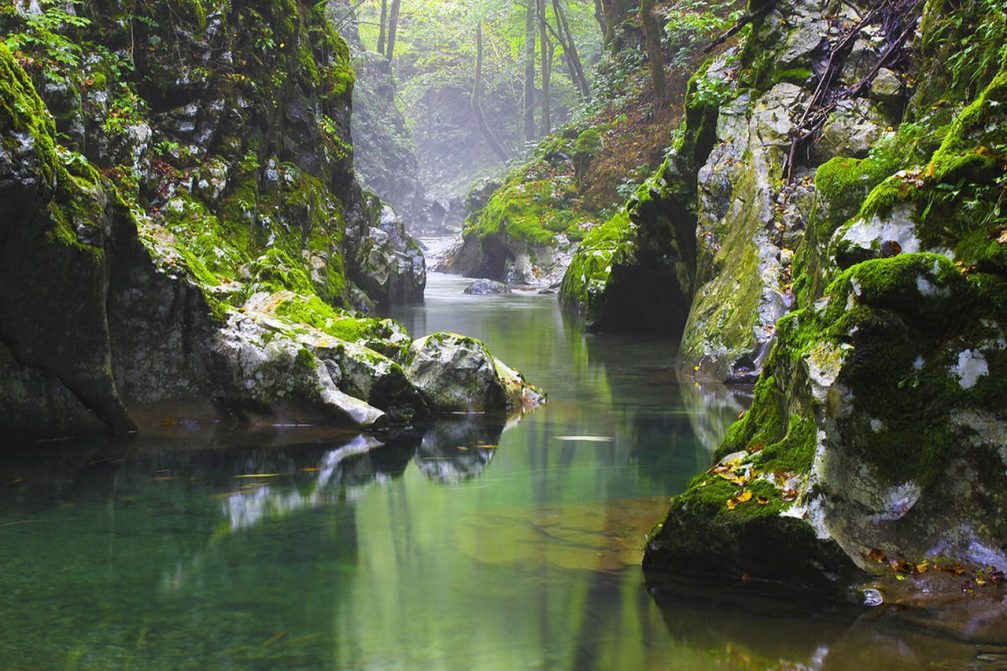
Klame Gorge or Korita V Klamah as it is called in Slovene is a lesser known gorge to the regular tourist, lying in the Kanomljica valley some 4 kilometres northwest of the town of Idrija. The gorge is around 300 metres long and only a few metres wide. Unfortunately, it is difficult to access and walk through for most people so it’s rarely visited and unknown.
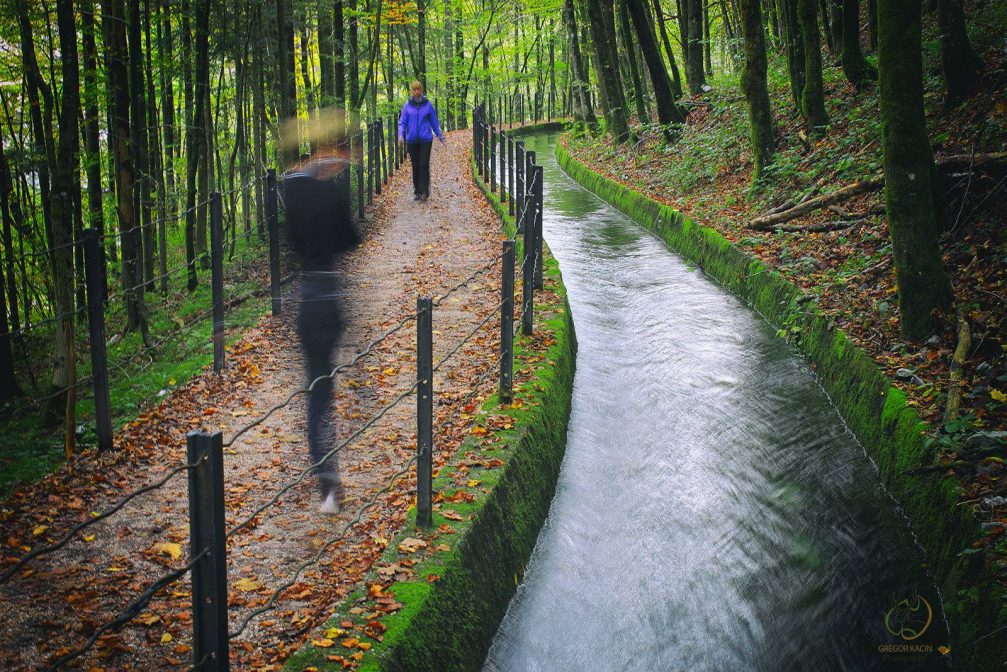
The Rake water channel in Idrija was built at the end of the 16th century to support the mercury mine operations in this oldest mining town in Slovenia with the second largest mercury mine in the world. Initially, the water channel was wooden, but in the second half of the 18th century it was enclosed with stone. Along the water channel, there’s a two-and-a-half-kilometre-long nature learning path unveiling Idrija’s treasures of geology, flora and cultural history.
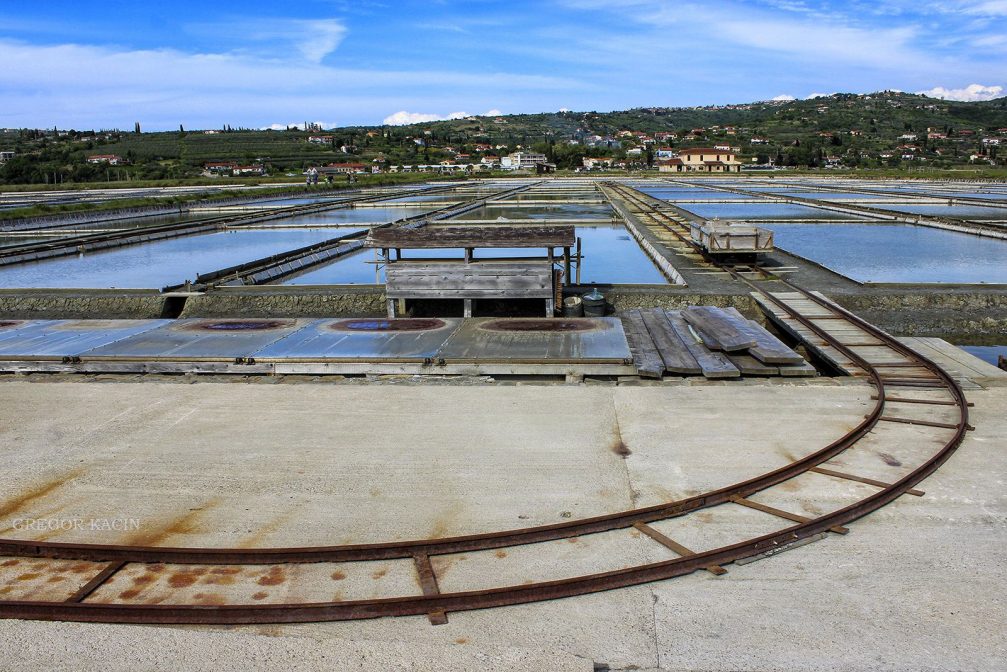
From the 14th century onwards, salt from the saltpans on the Slovenian coast was much sought after because of its purity and white colour. Unfortunately, many of saltpans were abandoned in the first half of the 20th century and nowadays, only the salt pans in Secovlje and Strunjan still exist. On both locations, the salt is still produced in a completely natural way based on a 700-year old method.
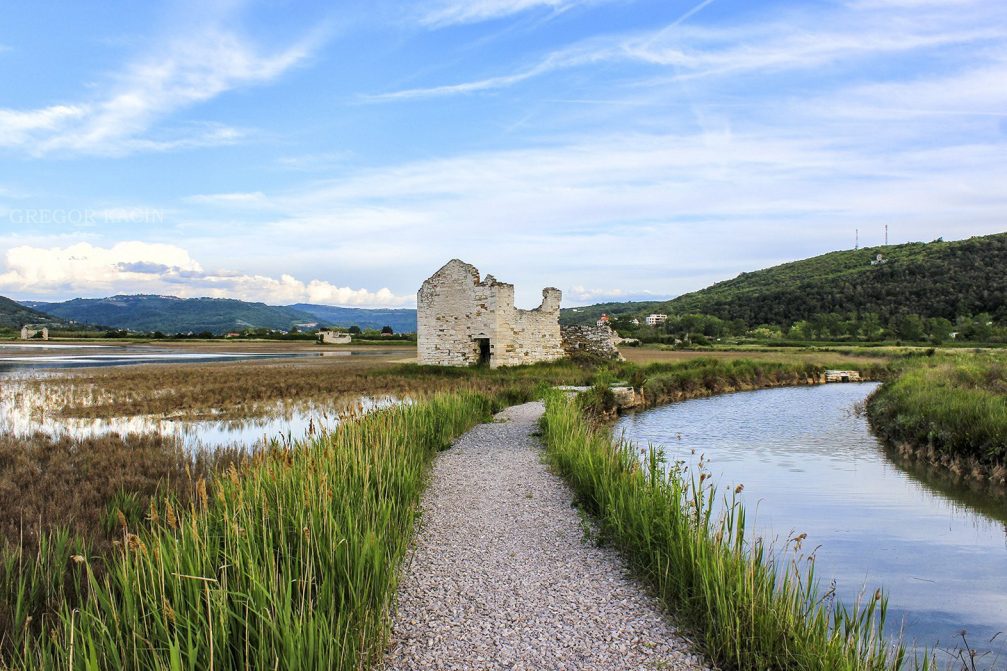
Saltpans are one of the most threatened wetlands in the Mediterranean. As part of the policy of the protection of rich natural heritage, in 1993 Slovenia joined the efforts for the preservation of these ecosystems by placing the Secovlje saltpans on the Ramsar list. Slovenia currently has 3 sites designated as Wetlands of International Importance (Ramsar Sites),
and the Secovlje saltpans are on this list for their exceptional ecological and landscape value. They are well known as an extraordinary ornithological location and a nesting ground for many birds and also the northern-most Mediterranean station for migrating birds. Occasionally, more than 200 different bird species live in the Secovlje saltpans, while almost a hundred bird species regularly nest there.
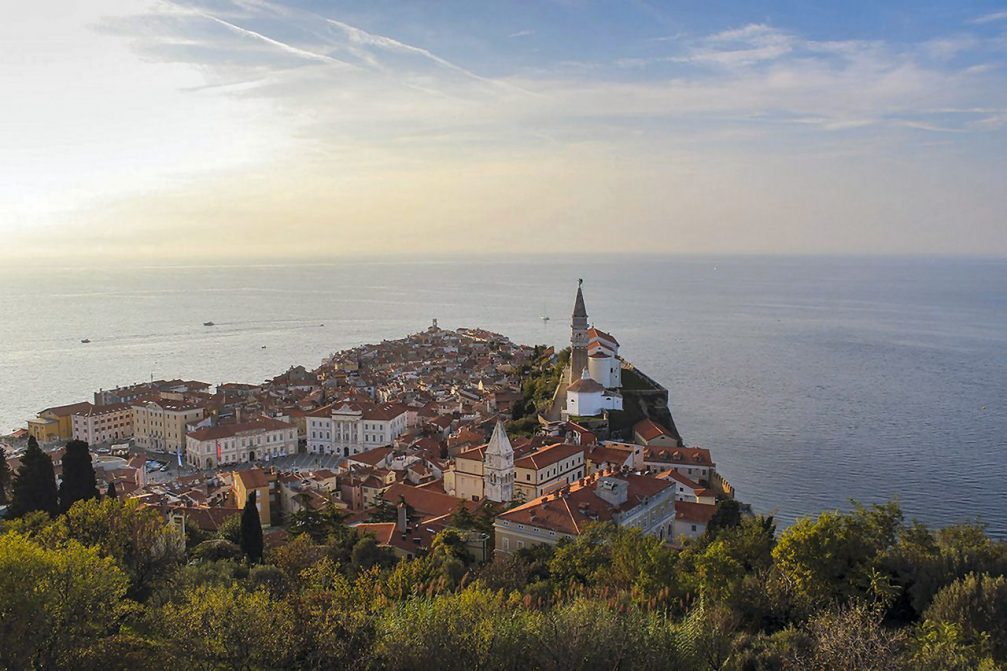
All of Slovenia’s towns and cities seem to be small. And the beautiful coastal town of Piran is no exception. It is built on a peninsula in a ‘V’ shape. A short walk up the hill brings you to the town walls. The views here over the town are stunning. From the top of the walls you can look out over the whole town as well as over the Adriatic Sea. It’s a fantastic place to come for sunset views.
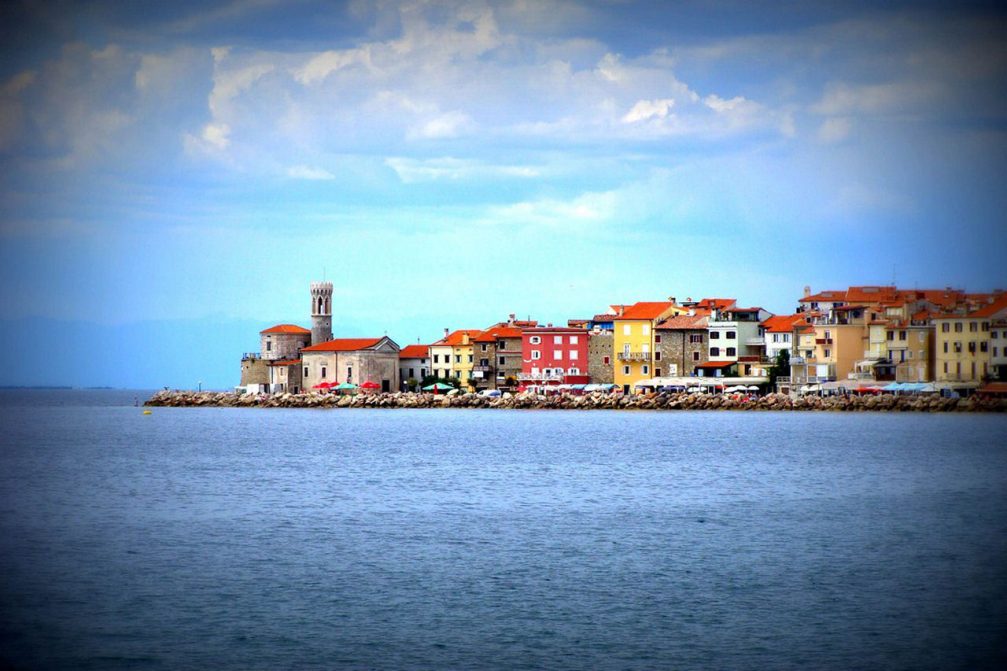
Picturesque, charming, quaint, sweet, laid-back and peaceful are all ways one could describe the tiny slice of Adriatic coastline occupied by Piran. For such a small town there are some impressive sights, like a sea side promenade, lovely marina, hill top town walls and the charming Tartini square which is considered as one of the most impressive squares in all of Slovenia.
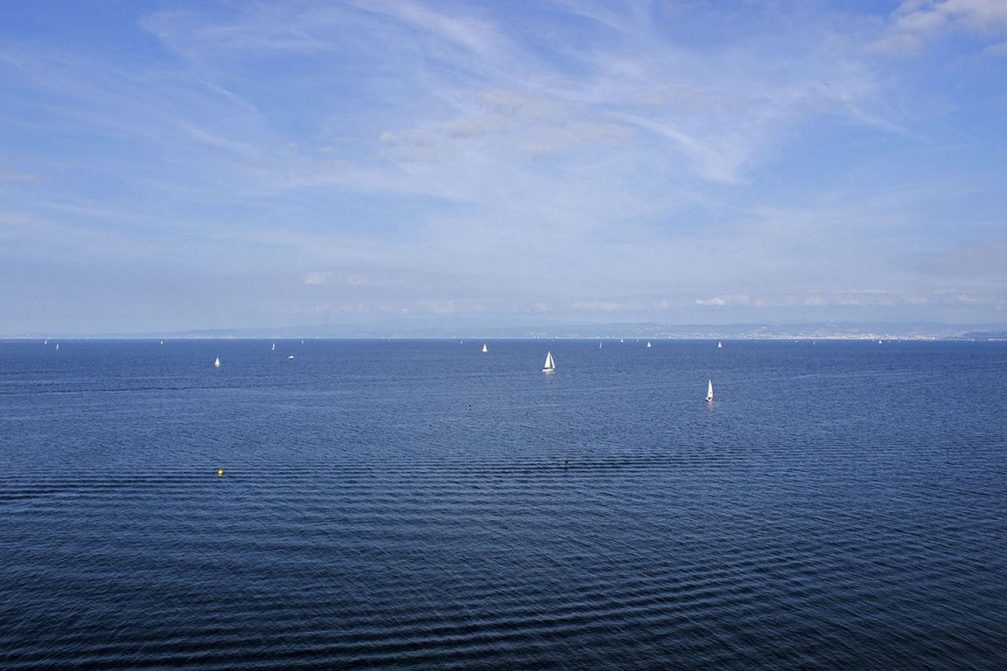
Slovenia is a maritime nation, with direct access to the Mediterranean Sea. The length of its coastline is about 47 kilometers (29 miles), running from the border with Italy to the border with Croatia.
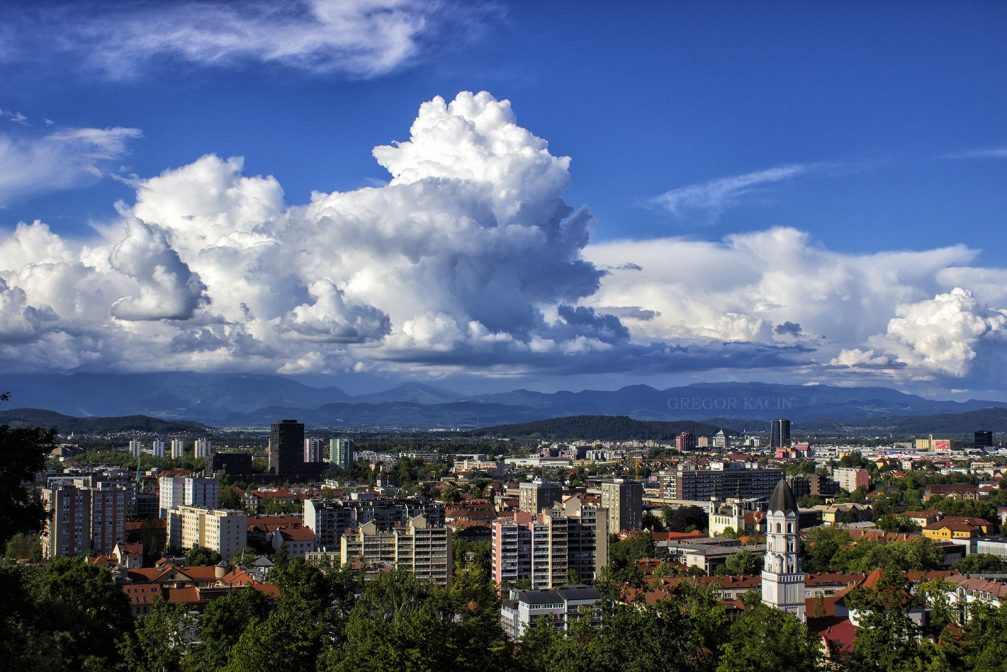
With a population of just under 275,000, Slovenia’s capital Ljubljana is one of the smallest capital cities in Europe. But they say that best things come in small packages and Ljubljana is no exception. It’s a city that surprises and exceeds expectations. It is small by surface area, but big in terms of hospitality and quality of life. Through its almost five-thousand year history, Ljubljana has grown into a contemporary, green, and tourist-friendly capital while preserving a relaxed Mediterranean-like atmosphere. Ljubljana itself means ‘the beloved’. Originally settled around 2000 BC by lake dwellers, hunters and fishermen, it later became the Roman city of Emona in 14AD, before being settled in the late 6th century by the Slavs and referenced by name in 1144.
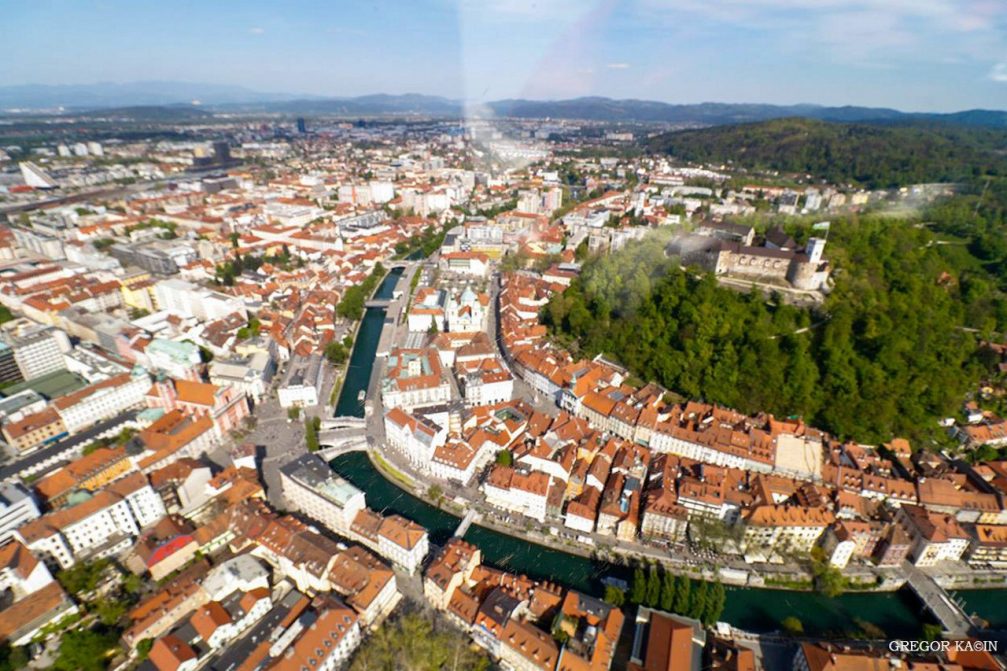
Lined with lovely riverside cafés and crossed by several bridges, the emerald green Ljubljanica River flows directly through the heart of Slovenia’s capital Ljubljana and is the focal point of life in the city throughout the year and especially in the spring and summer months. Perched on top of 375-metre-high hill east of Ljubljana’s Old Town is the Ljubljana castle which dates back to the 16th century, when it was completely rebuilt following a strong earthquake in 1511.
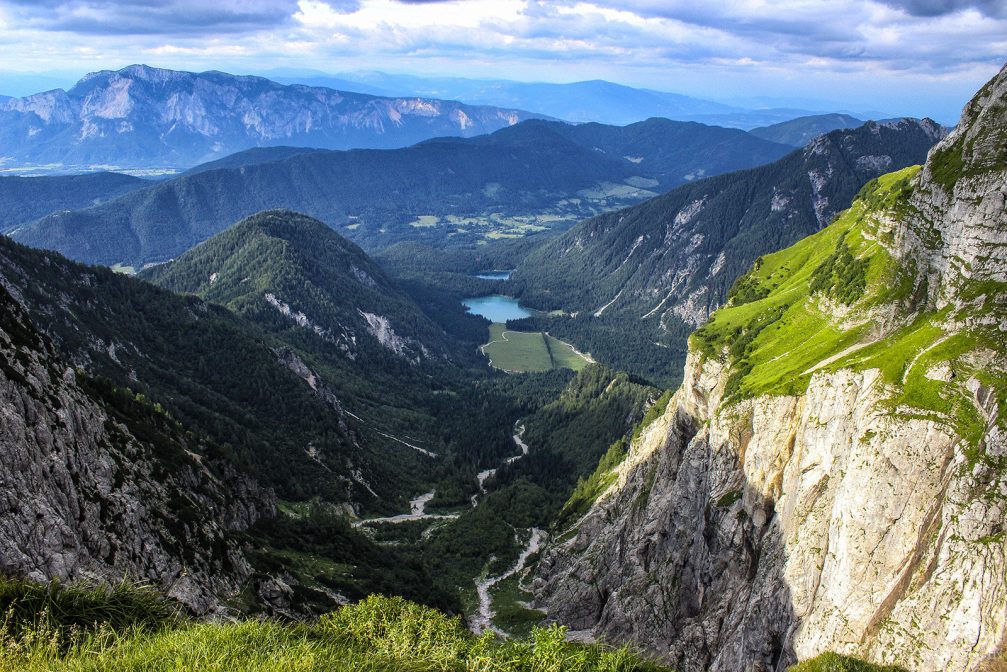
The Mangart saddle, at an elevation of 2,072 metres (6,798 feet), offers magnificent views of the Fusine Lakes in Italy and inspires you with all the untamed nature around you. The saddle is also the most popular starting point for a hike to the summit of Mt. Mangart which is the fourth highest mountain in the Julian Alps.
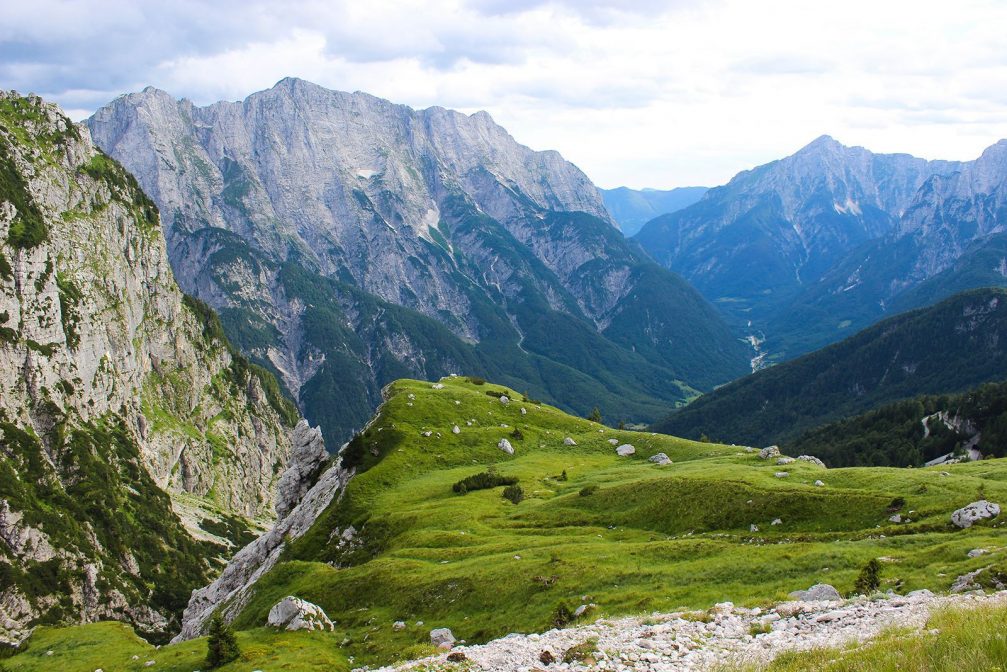
The Mangart saddle also offers incredible views towards the Loska Koritnica valley to the south. The saddle can be accessed by Slovenia’s highest lying road which was constructed in only a few short months in 1938. The road climbs up 11 kilometers at a staggering 22% grade in places, it twists, with several hairpin turns, complex switchbacks and passes through six unlit tunnels.
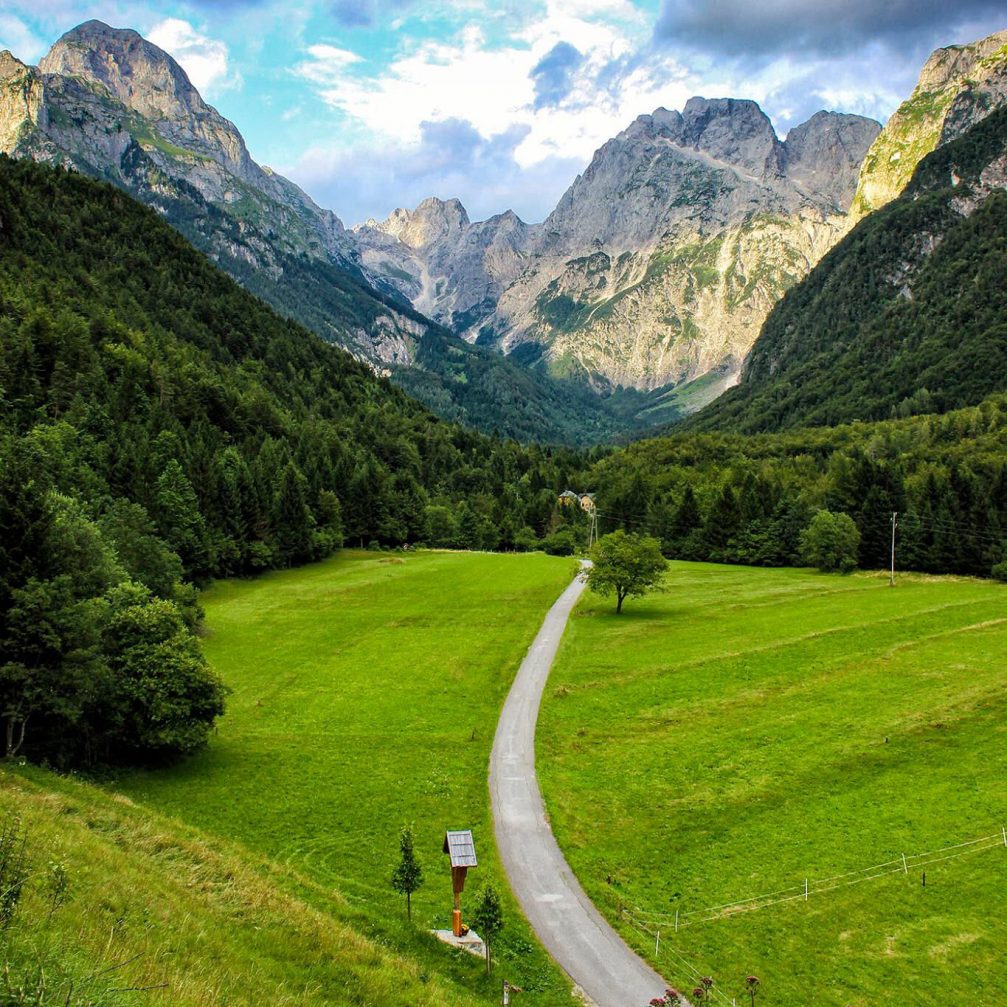
The Loska Koritnica valley is a very picturesque alpine valley surrounded by majestic 2,000-meter Julian Alps peaks in the Triglav National Park in the northwestern corner of Slovenia. The nature here is really breathtakingly beautiful and amazes the visitor by its primeval beauty.
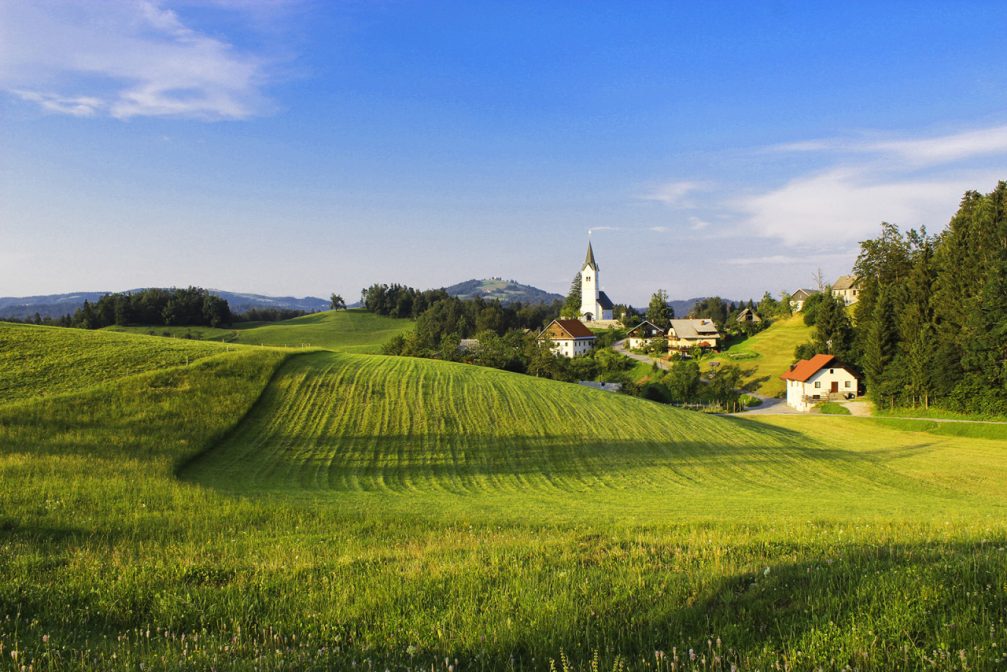
Zavratec is a lovely small village in the hills east of the town of Idrija in western Slovenia. The village’s best known landmark is the Baroque-style Church of St. Ulrich dating to 1647.
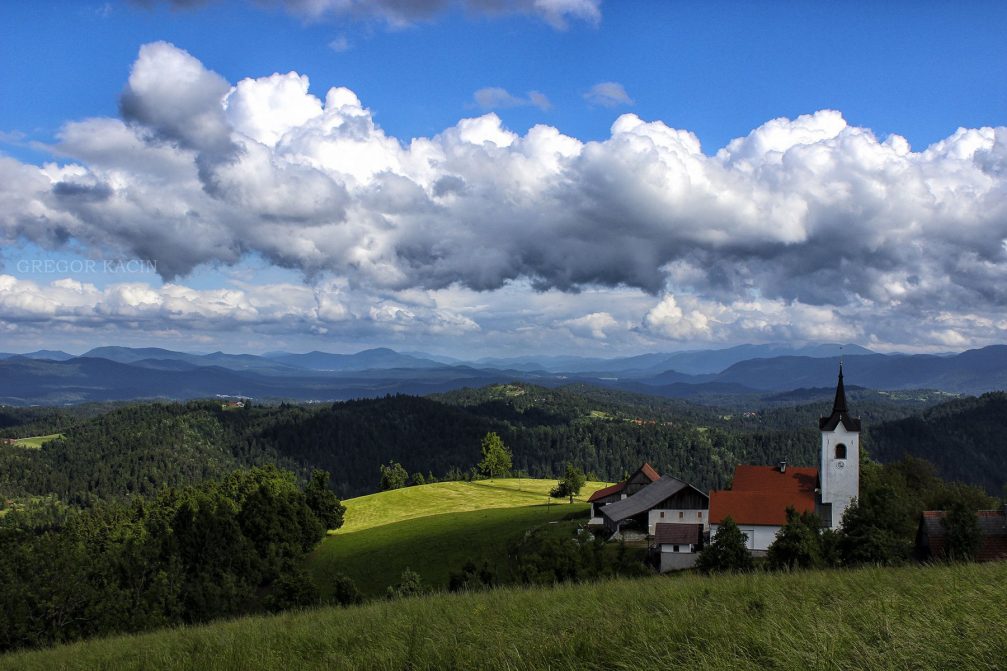
Medvedje Brdo is a dispersed settlement at an elevation of 806 metres (2,644 feet) in the hills northwest of the town of Logatec in western Slovenia. The local church in the settlement is dedicated to Saint Catherine and stands on the spot of the chapel from 1200. In 1684 it was rebuilt in the Gothic style. The church’s present form is from 1911 when it was completely renovated.
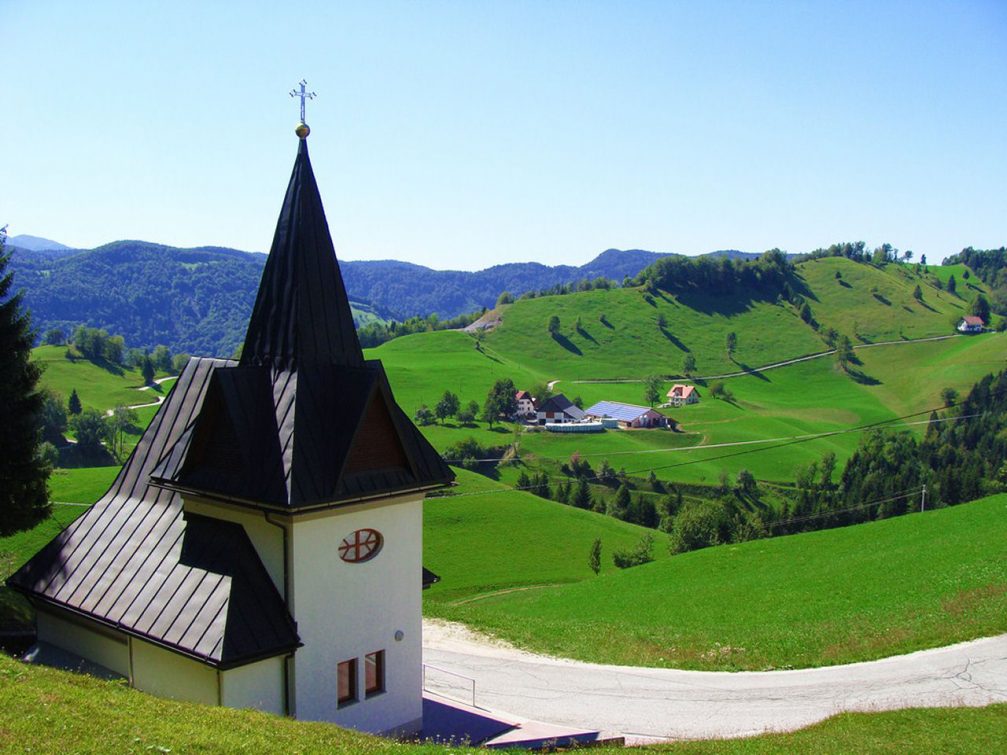
Idrijske Krnice is a dispersed settlement at an elevation of around 800 metres (2,600 feet) in the hills northwest of the town of Spodnja Idrija in western Slovenia. The local church in the settlement is dedicated to Saint Florian and was built from an old Italian military warehouse from the Second World War.
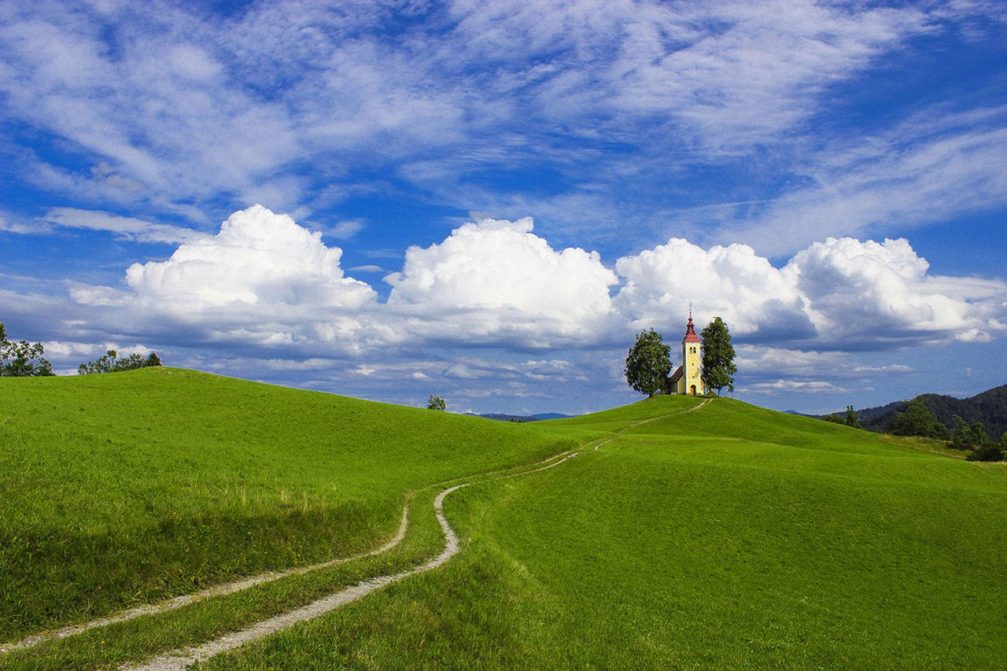
As you might have noticed, there are many hilltop churches in Slovenia. The Church of St. Thomas above the village of Gorenji Vrsnik near the town of Idrija is another lovely church in a beautiful location!
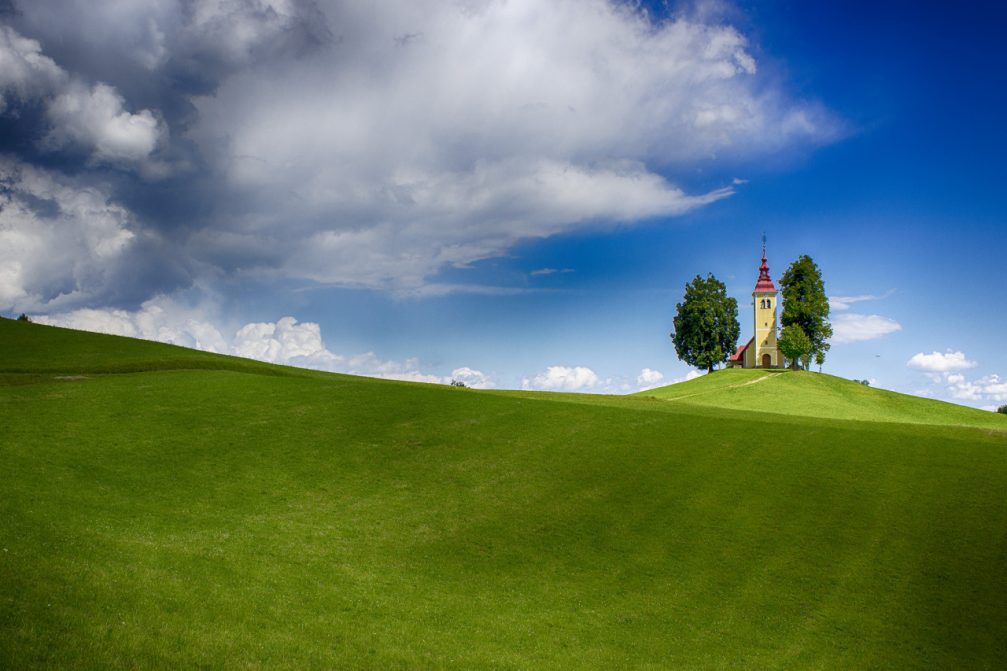
Another beautiful photo of the Church of St. Thomas which stands on top of a 716-metre-hill above the village of Gorenji Vrsnik. The church dates to the 17th century and there are three wooden altars from the first half of the 19th century inside the church.
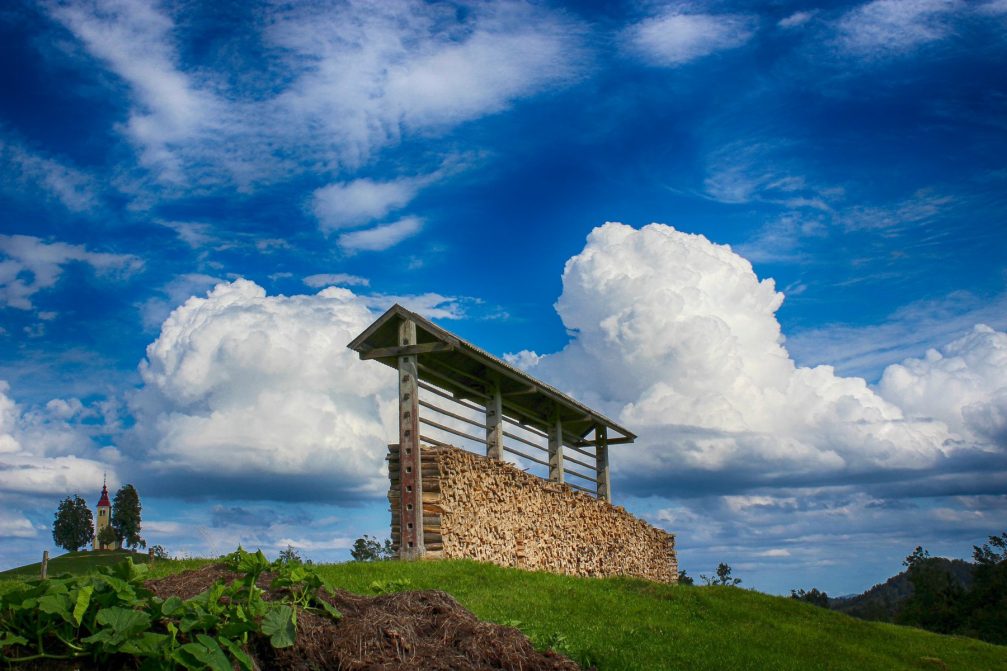
The hayrack or kozolec as it is called in Slovene is a free standing, permanent, mainly wooden, vertical, open but roofed structure for drying grain sheaves, wheat, clover, maize, beans, hay, or even wood.
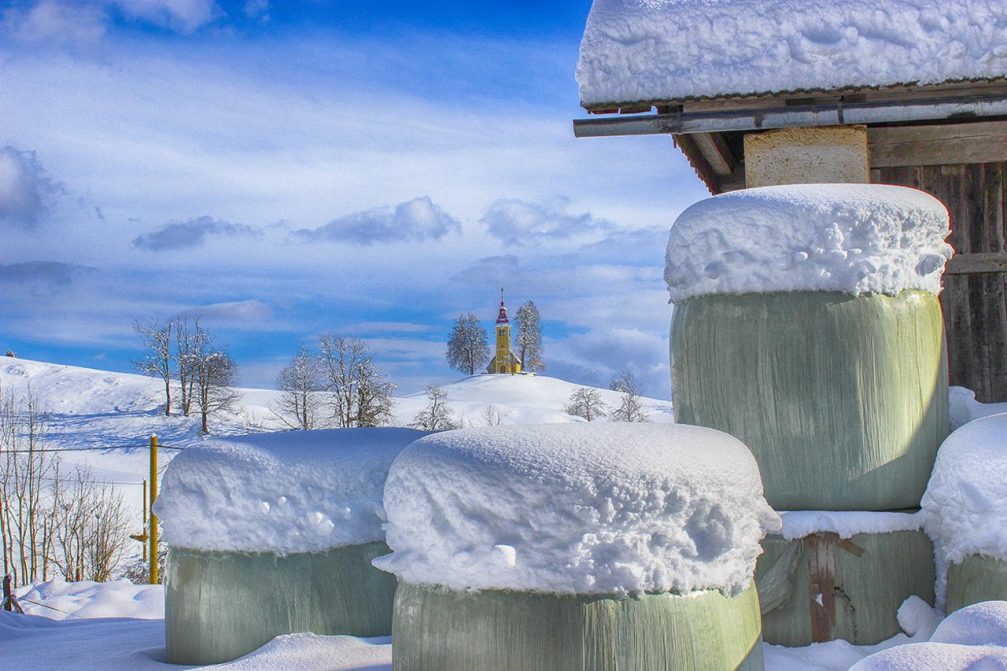
With the grass not completely dry, compressed into bales and a plastic wrapping to keep out the air, a fermentation process takes place that improves the food value for ruminants and acts as a handy way to store cattle fodder through the winter.
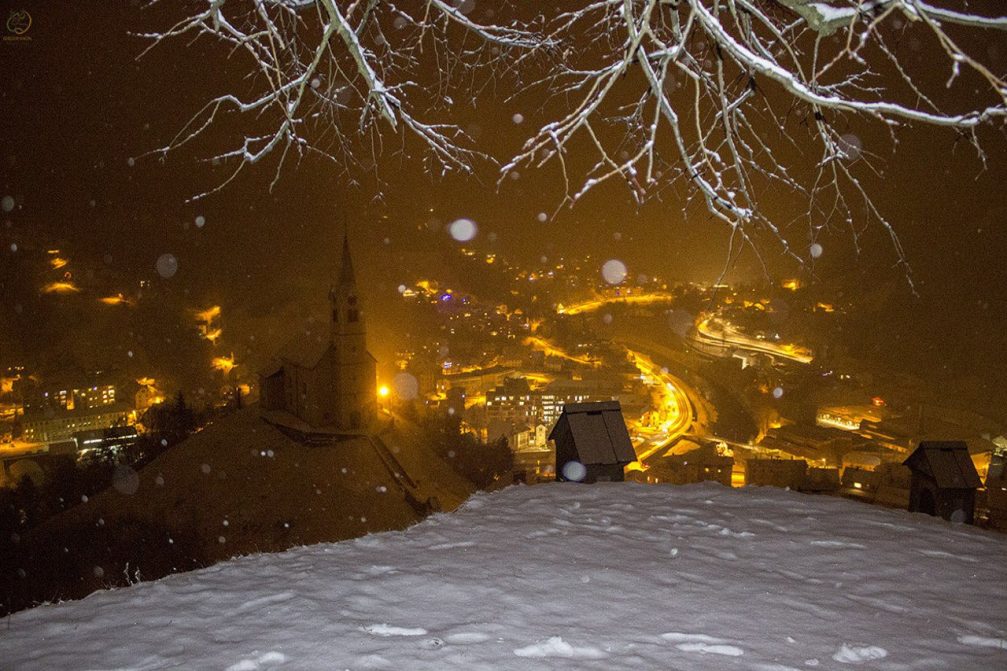
Idrija is a lovely small town which lies in the Idrija Basin, surrounded by the Idrija Hills in western Slovenia. It’s best known as a place of Europe’s second largest mercury mine. Large quantities of mercury were discovered here in the late 15th century, which contributed tremendously to town’s prosperity and history. On the Rozni Hrib hill above Idrija’s town centre stands the 17th-century church of St. Anthony of Padua.
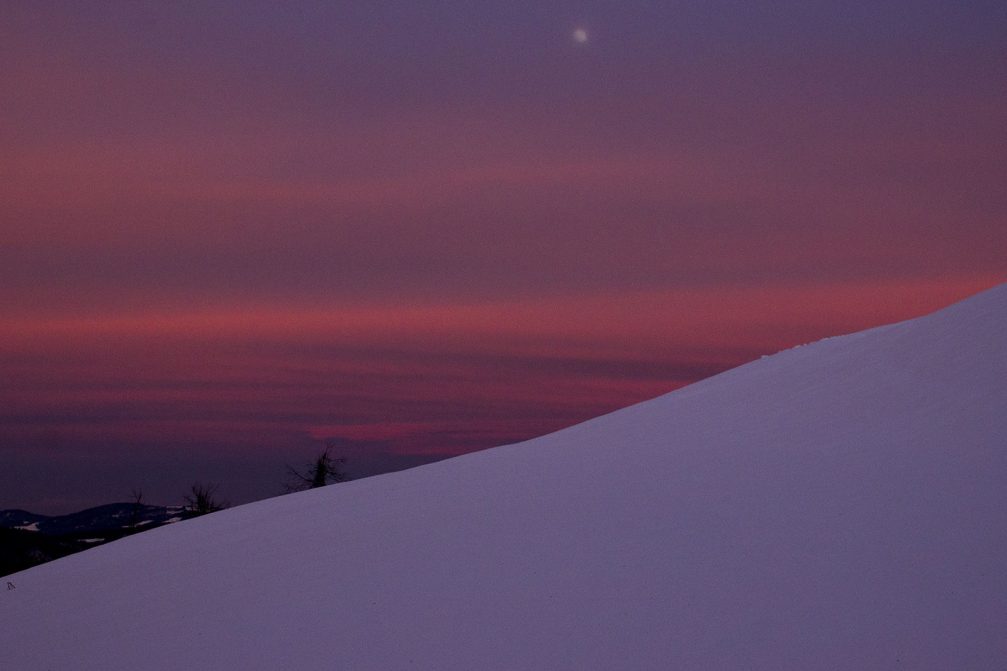
It seems that everyone loves sunsets. Sunsets grace the covers of travel magazines and brochures and photographers always try to capture that perfect sunset image. On social media pages like Facebook, Instagram, Google Plus, Twitter, Tumblr and Pinterest, people share photos of the sunset they saw that night. Sunsets are definitely enchanting and inspiring. But, have you noticed how sunsets in the winter seem even more beautiful and special?
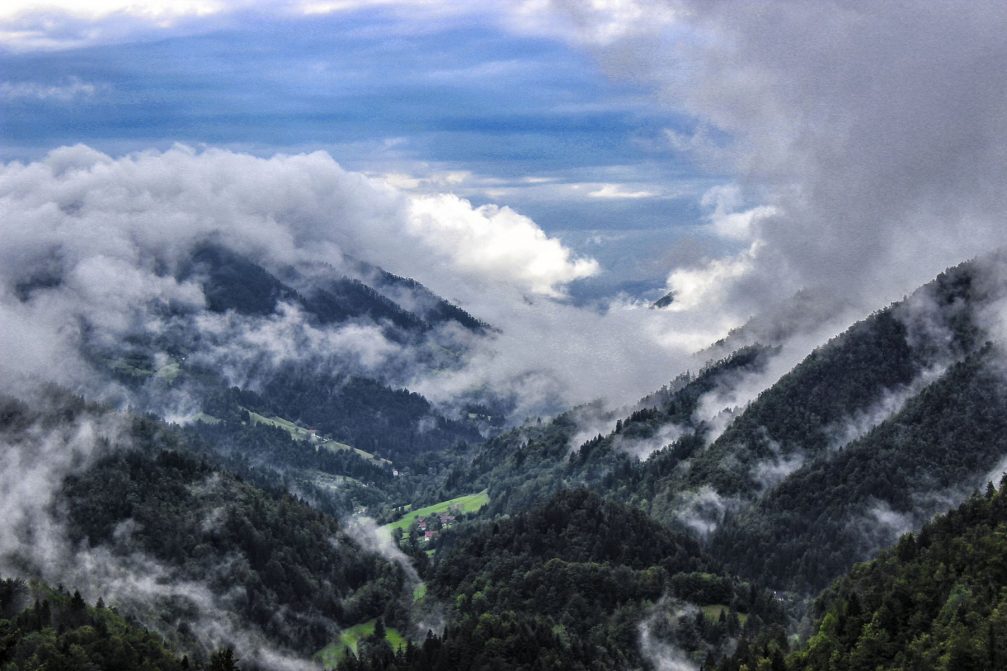
Kanomeljsko Razpotje or just Razpotje is a popular excursion destination in the Idrija area that offers magnificent views of the breaking zone of the famous Idrija Fault carved deeply into the surrounding hills.
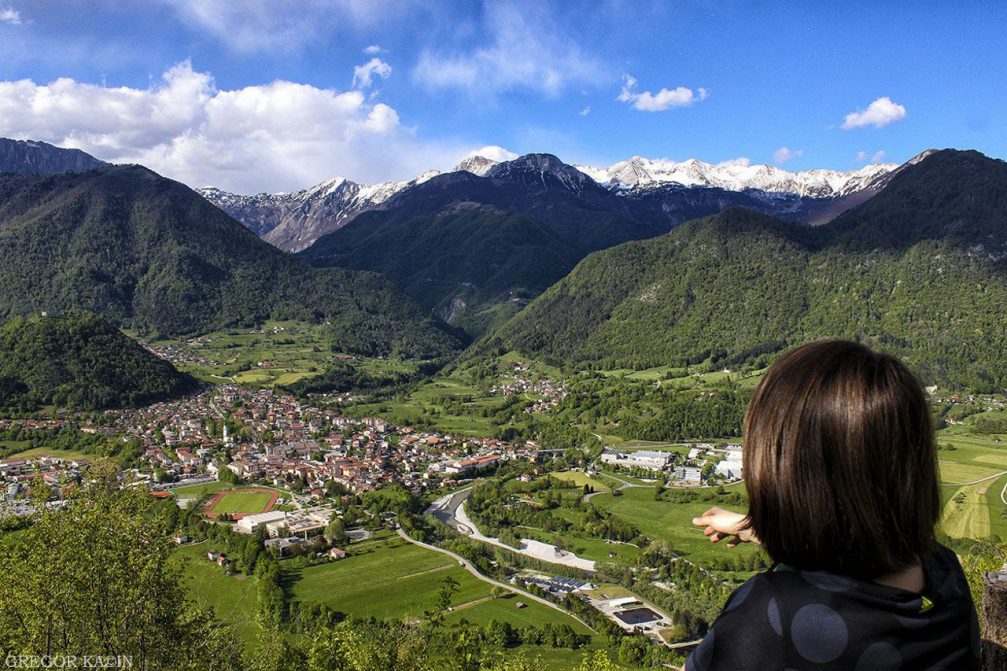
The 498-metre-high Bucenica peak offers great views of Tolmin, a charming little town with a population of just above 3,500 inhabitants situated on the southern rim of the Julian Alps in northwestern Slovenia, close to the border with Italy.
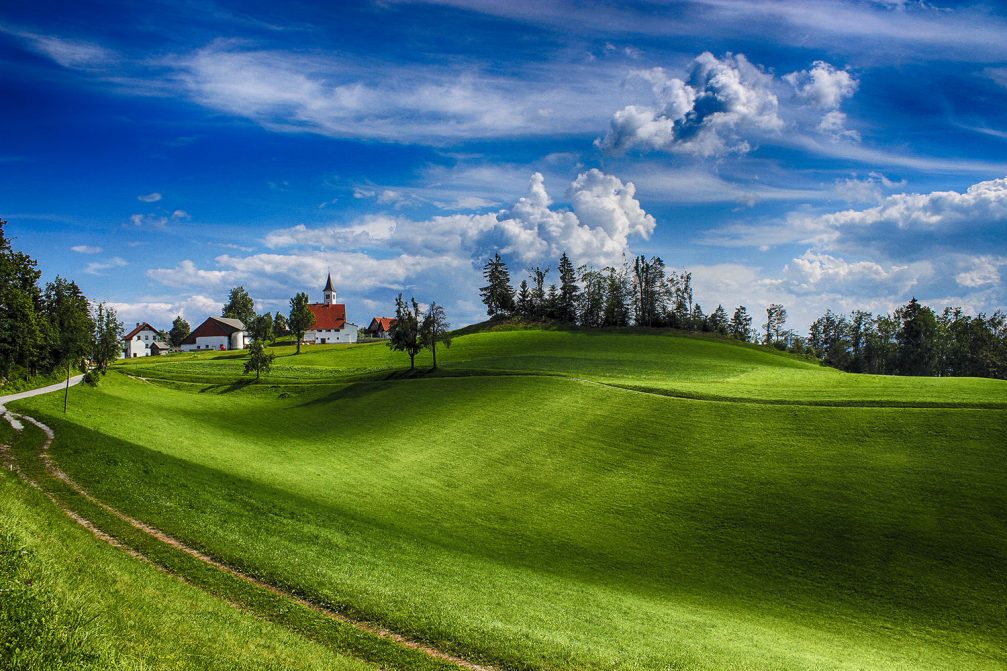
Gore is a small village at an elevation of around 830 metres (2,720 feet) in the hills east of the town of Idrija in western Slovenia. The local church in the village dates to the year 1823 and is dedicated to Saint Mary Magdalene. It was built on the same place where the first church in the Idrija area existed in the 14th century.
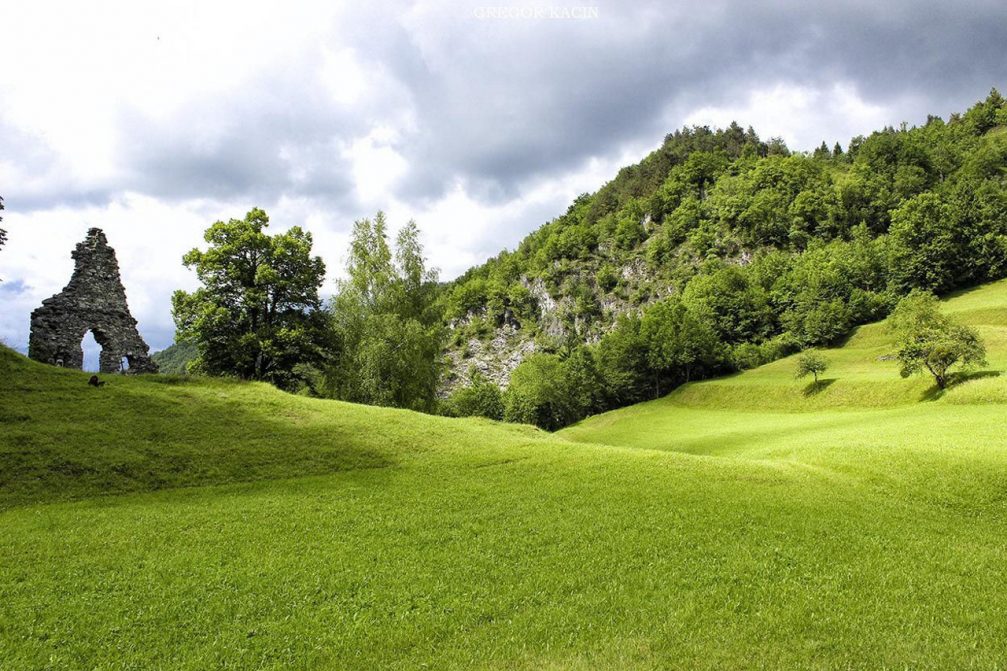
In the hills above the Idrijca valley near the village of Jagrsce you can find the ruins of an old pilgrimage church.
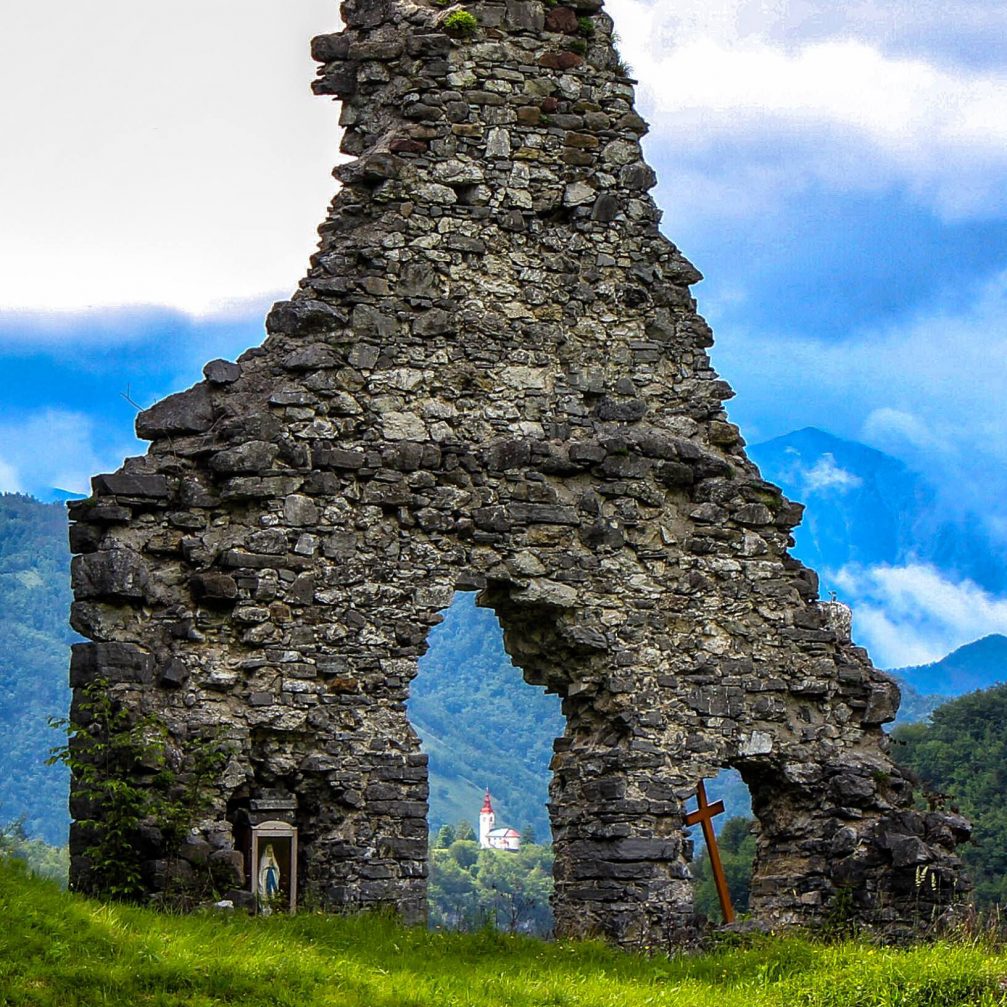
Through the ruins of an old church in Jagrsce you can see the Church of St. John the Baptist that stands on the edge of the Sebrelje plateau.
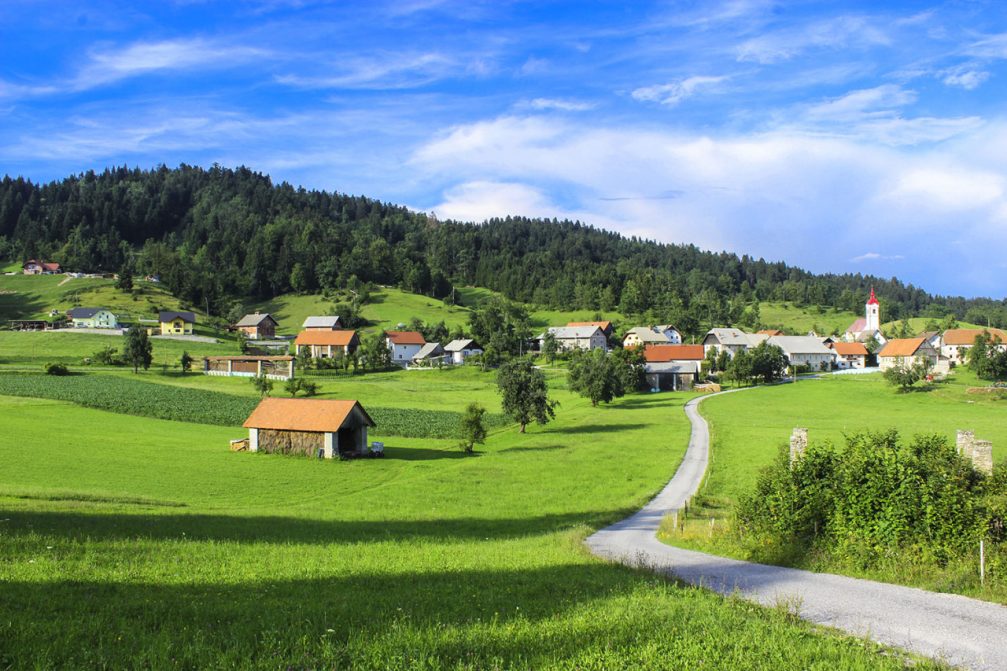
Ledine is a charming old village at an elevation of almost 800 metres (2,600 feet) on the Ledine plateau east of the town of Spodnja Idrija in western Slovenia. The village was first mentioned way back in 1063. The church in the village is dedicated to Saint James.
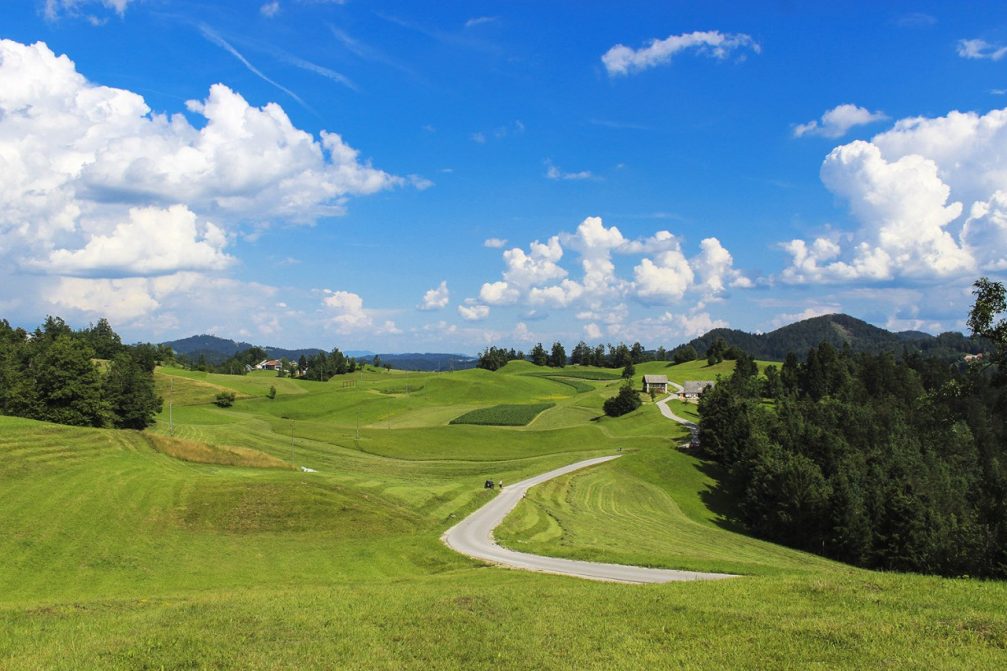
A winding but picturesque road takes you from the town of Spodnja Idrija to the Ledine plateau. The plateau offers lovely views in all directions and is a very popular spot for walkers, cyclists, dog-walkers and nature lovers.
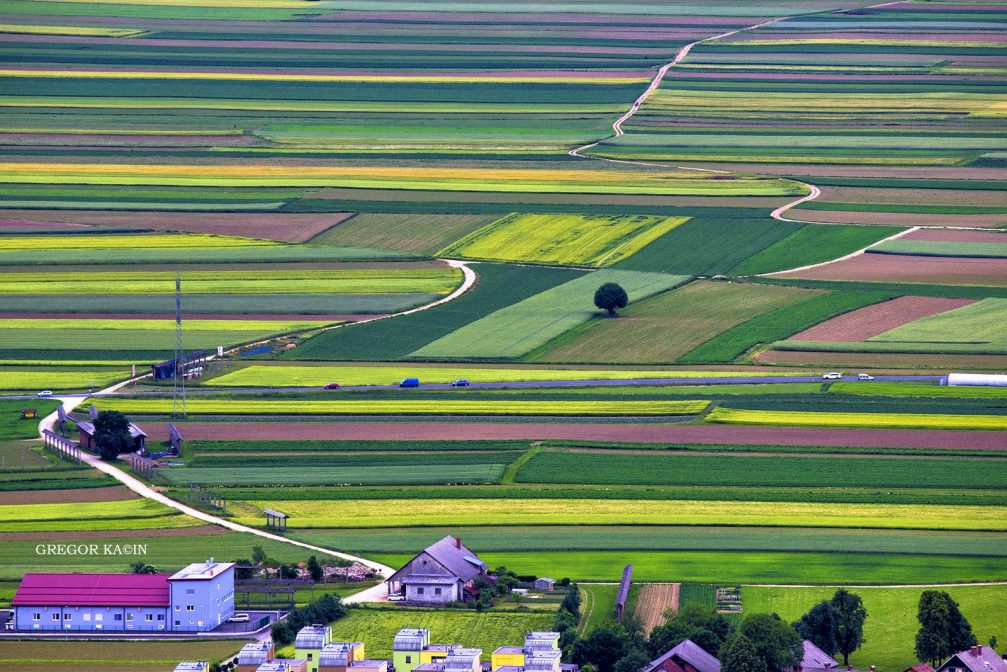
The postcard-worthy fields of Sorsko Polje near the village of Srednje Bitnje.
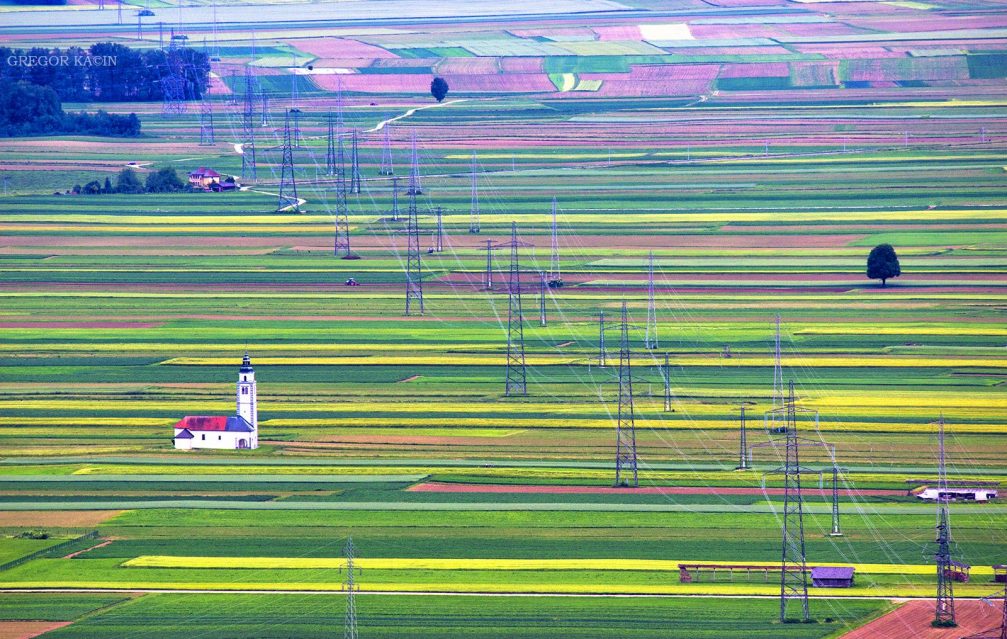
The Church dedicated to Saint Ursula stands in the middle of the picturesque fields of Sorsko Polje. The church was constructed in the beginning of the 17th century, but was later destroyed and rebuilt several times.
| |
|---|
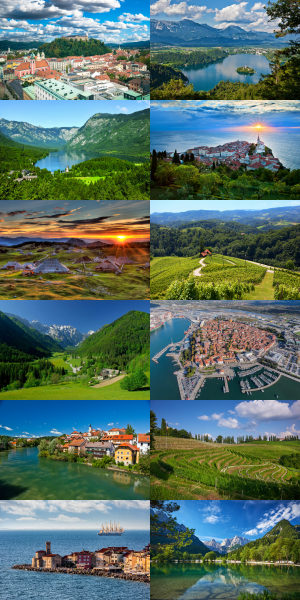 Discover beautiful Slovenia through amazing photos that will instantly make you want to visit and explore this delightful country in the heart of Europe. View more than 100 galleries with more than 5.500 landscape and nature photos from 50+ photographers! ENJOY! |
| |
|---|
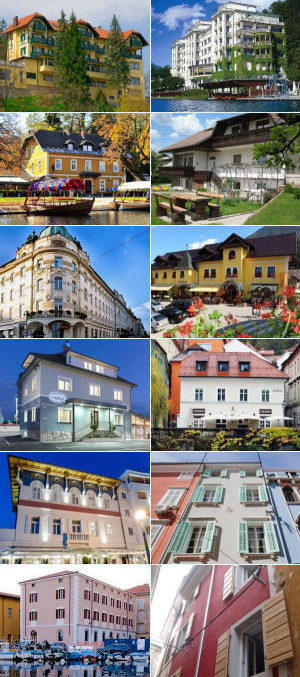 There is a wide array of options for accommodations in Slovenia, including hotels, guest houses, apartments, bed and breakfasts, hostels, camping and glamping sites and farm stays. Find out which places to stay in Slovenia we recommend and why! |


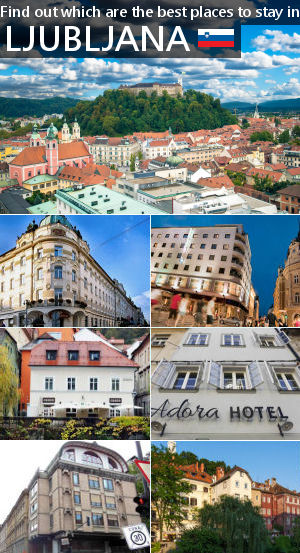
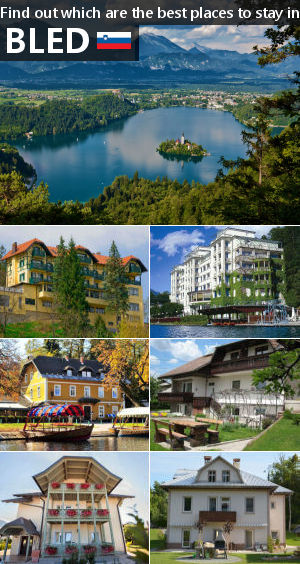
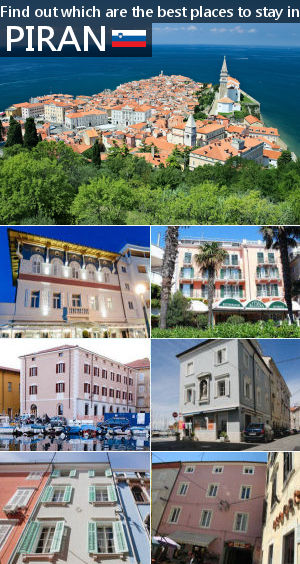

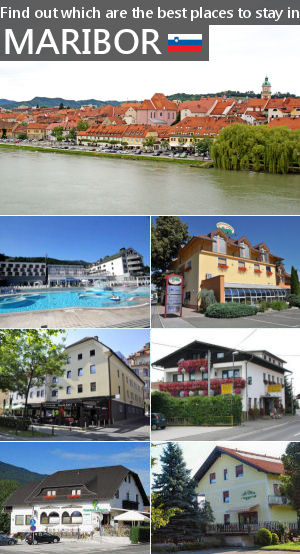
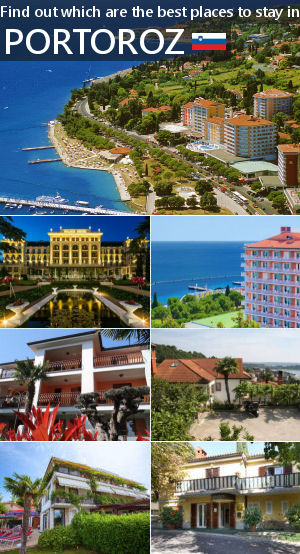
Oh I’ve been in Slovenia last summer and absolutely fell in love.
It was my dream to go to Slovenia, so I was worried I’d be disappointed. But I totally fell in love with it too. What a wonderful country.
Slovenia is on my MUST (not just must, but all caps MUST) list. My best friend spent seven days there before coming to visit me, and I had a lot to live up to on his first trip abroad! Gorgeous photos.
I totally agree! Slovenia is a great place!
So gorgeous, these pictures made me want to go to Slovenia RIGHT now!
As always, fabulous photos!
Love the photos! Slovenia is a magical country. I spent two months in Europe last year, visiting several places and I had a really hard time leaving at the end.
This looks really nice, I’ve always wanted to go to Slovenia. Can’t wait for more photos!
I love Slovenia. I have nothing but wonderful memories of the country and look forward to returning soon.